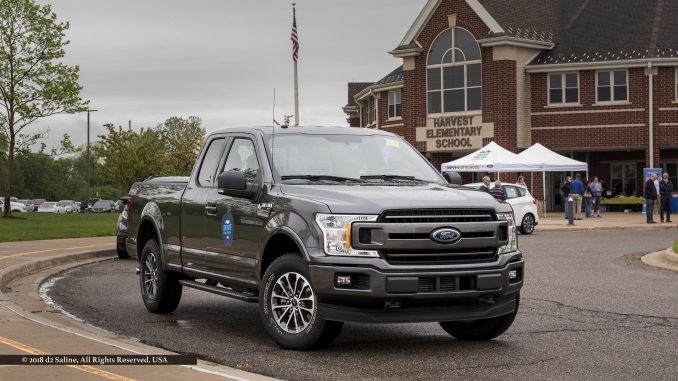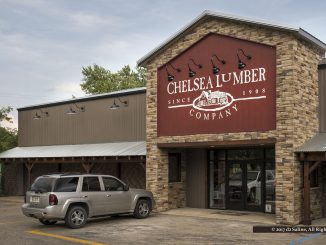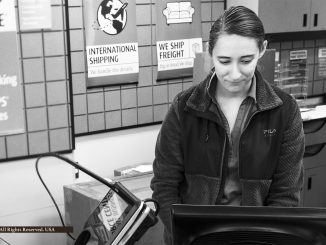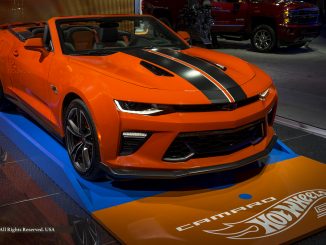
Thirty years ago, new car models were unveiled at a set-certain time of year.
Consumer research was done by reading buyer’s guides and special issues of monthly magazines with content gleaned from a select few writers granted access through preview showings. Highly stylized stock photography provided by manufacturers provided visual appeal, details deamed important to highlight. Many vehicles were exactingly specified on multi-page forms sent to the factory, then delivered weeks later.
When it came time to actually purchase, online absolutists would have you believe, buying a car “the old-fashioned way” was “a nightmare.” The Internet changed all of that — for the better — they then assert. Perhaps the web should be credited with making all cars safer, cheaper, and more fuel efficient, too. [1,2]
Tom Bicknell actually started selling automobiles in 1982, and he continues to do so. This community knows him as Sales Manager with Briarwood Ford on East Michigan Avenue at State. Today he sees remnants of point-in-time auto show unveilings having become diffused, dilluted. Industry publications cover new releases in real time, with video and sometimes their own original series programming. [3,4,5]
And currently, “about 15% of new car sales are build-to-order,” he told Saline Journal. “Delivery is typically six to eight weeks.” No nightmares, however.
What about the other 85% of sales? If not for pesky franchise contracts that prohibit manufacturers from selling directly to consumers, would not online automobile sales skyrocket? Release all automakers from such outdated precepts and they’ll follow the lead of Tesla Motors, right? [6,7,8]
Restrictions or not, it turns out that the vast majority of buyers are not interested in casting a wider net nor purchasing from afar.
Larry Gakle is a front line sales representative for Briarwood Ford, one of the first interactions a new prospect is likely to have at the dealership. In his experience, these transactions are still highly relational. “People aren’t as loyal to badges as they used to be,” he said. “But they are very focused on financing and lease arrangements. They want to work with a real person on that, starting with narrowing selections to fit their needs and budgets. Start out right with them and that’s when they become loyal — they keep coming back.”
The vehicle purchase sequence has been characterized as what Fortune magazine calls the “reverse showrooming” effect. [9]
[This] sets autos apart from other retail industries. If you want a Blu-ray player, you go shop at Best Buy and then actually buy the thing online. For cars, you do all your shopping online and then go to the lot and tell them the exact car you want to look at.
Mr Bicknell elaborated: “People do all the research online. When they do decide to buy, they go to a local dealer. Convenience is important. So is ‘community’ — our shared connection here. Our community involvement is definitely an advantage.” For example, 2018 as a “big, big year” for what was brought into Saline Music Boosters through the annual Briarwood Ford “Drive One 4 UR School” event in May. [10]
Ninety percent of our online leads come from within a ten-mile radius.
The one category where product loyalty continues to stand on its own is among truck buyers. “People may confuse one badge for another with a lot of sedans,” Mr Gakle noted. “But they are extremely loyal when it comes to trucks. If anything, that’s even more true today.” [11,12,13]
Now in his thirty-sixth year with a brick-and-mortar car dealership, Tom Bicknell summarized the business post-Internet in much the same way one might imagine he would have in the early 1980s. “Loyalty is still based on how well you’re treated in the showroom. If they like you and they trust you, they’ll be back.
You have to be friendly, transparent, and honest.
References
- “In the future, buying a car involves no pressure, no lies, no leisure suits” Jeff Zurschmeide (August 27, 2015) Digital Trends.
- “Why cars went from boxy in the ’80s to curvy in the ’90s” Joseph Stromberg (August 26, 2016) Vox.
- Briarwood Ford (home page).
- “Howes: Creative opportunities abound in Detroit as carmakers ditch auto shows” (July 12, 2018) Michigan Radio.
- Motor Trend (home page).
- “Why you can’t buy a car online — for now” Rick Popely (May 10, 2017) Chicago Tribune.
- “Tesla is Turning the Car Sales model on Its Head” Nick Chambers (November 2011) Autotrader.
- “7 Reasons Why Tesla Insists on Selling its Own Cars” Katie Fehrenbacher (January 19, 2016) Fortune.
- “Car dealerships turn to iPads, not sign twirlers, to win business” Ben Geier (September 2, 2014) Fortune.
- “Briarwood Ford ‘Drive One 4UR School’ Event This Saturday Could Bring $6000 + $2000 = $8000 to Saline Music Boosters” Janet Deaton (May 17, 2018) Saline Journal.
- “These are the most popular cars and trucks in every state” Ashley May (August 29, 2017) USA Today.
- “Why the rich and famous are starting to prefer pickup trucks” Paul A Eisenstein (December 20, 2017) NBC News.
- “Are Pickup Trucks Becoming the New Family Car?” Mike Monticello (February 22, 2018) Consumer Reports.



